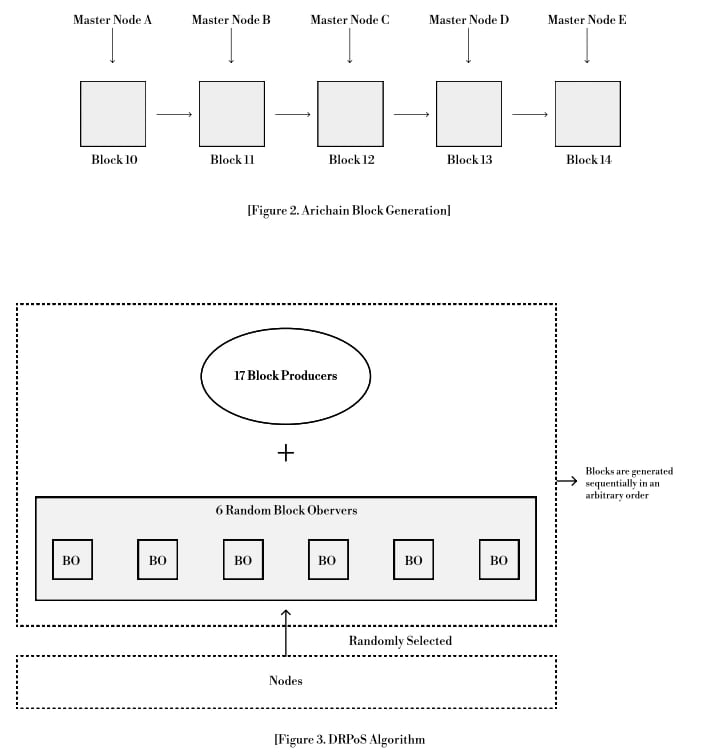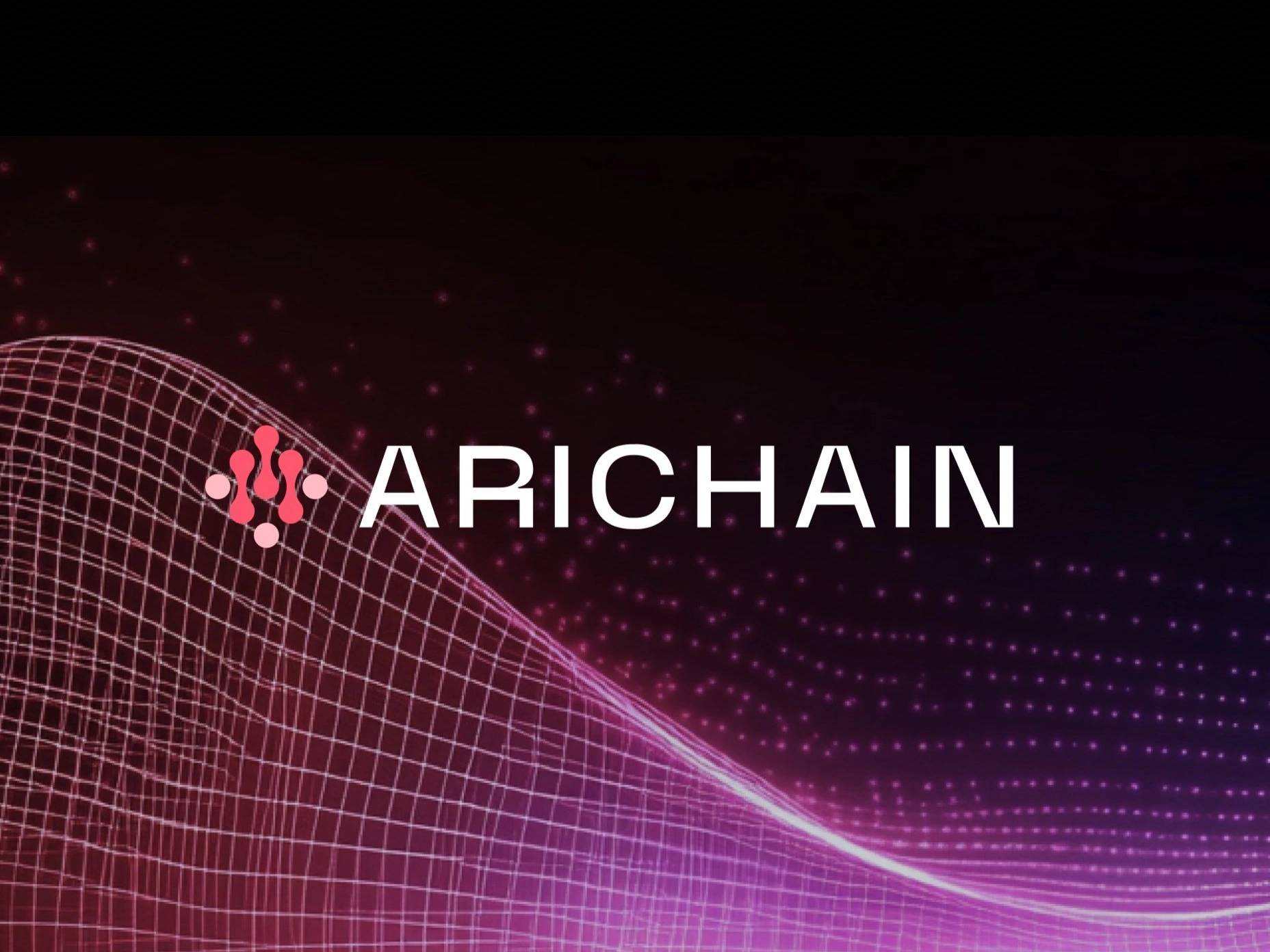위키 구독하기
Share wiki
Bookmark
AriChain
AriChain
AriChain(아리체인)은 대량의 블록체인 기술 채택을 용이하게 하도록 설계된 레이어 1 블록체인 플랫폼입니다. 낮은 비용과 용이한 개발을 통해 탈중앙화 애플리케이션(dApps)을 위한 고성능 네트워크를 제공하는 것을 목표로 합니다. [1]

개요
Arichain(아리체인)은 중앙 집중식 제어 없이 작동하는 개미집단 구조를 모델로 한 분산형 역할 기반 네트워크로 작동하도록 설계된 블록체인 플랫폼입니다. 참여자 간의 조정된 상호 작용을 통해 집단적 목표를 달성하는 것을 강조하며, 자신을 "초유기체 네트워크"라고 설명합니다.
이 플랫폼은 자체 메인넷과 기존 블록체인 시스템의 한계를 개선하기 위해 개발된 위임형 랜덤 지분 증명 (DRPoS)이라는 독점적 합의 알고리즘을 도입합니다. DRPoS는 지정된 블록 생성자를 통해 블록 생성을 간소화하여 트랜잭션 속도와 네트워크 보안을 향상시키는 것을 목표로 합니다.
블록체인에 익숙하지 않은 사용자의 진입 장벽을 줄이기 위해 Arichain(아리체인)은 DAPI 기반 스마트 계약 처리 시스템을 통합하고 Linux 및 Windows 인터페이스와의 호환성을 제공합니다. 또한 이전 블록체인 세대의 가상 머신 환경에 대한 액세스를 제공하여 데이터 중복성과 저장 비효율성을 최소화하면서 탈중앙화 애플리케이션(DApp) 개발을 지원합니다. [6] [7]
기술
DRPoS

Arichain(아리체인)에서 위임형 랜덤 지분 증명 (DRPoS)은 분산화, 에너지 효율 및 네트워크 보안을 개선하기 위해 개발된 합의 알고리즘입니다. 이는 작업 증명(PoW) 및 기존 지분 증명(PoS)과 같은 이전 합의 방법의 높은 에너지 사용량과 중앙 집중화 위험을 대체합니다.
DRPoS는 17명의 선출된 블록 생성자(BP)와 6명의 무작위로 선택된 블록 관찰자(BO)를 결합하여 무작위 순서로 블록을 생성합니다. 토큰 보유자는 ARI 토큰을 스테이킹하여 BP에 투표하거나 BO로 활동합니다. 이러한 2단계 시스템은 검증 계층을 추가하고 공모 가능성을 줄여 네트워크의 무결성과 복원력을 향상시킵니다.
참여자(BP, BO 및 위임자)는 트랜잭션 수수료와 인플레이션 보상을 통해 인센티브를 받습니다. 보상의 일부는 전체 노드의 장기적인 데이터 저장 요구 사항을 해결하도록 설계된 저장소 기금에도 할당되어 블록체인이 성장함에 따라 지속 가능성을 보장합니다.
DRPoS는 성능과 확장성을 유지하면서 중앙 집중화를 줄이는 것을 목표로 무작위성과 분산 참여를 강조합니다. 4세대 발전은 위임형 지분 증명(DPoS) 모델을 수정하고 확장합니다. [8] [9]
파트너십
잘못된 내용이 있나요?
